#ottoman odyssey
Explore tagged Tumblr posts
Photo
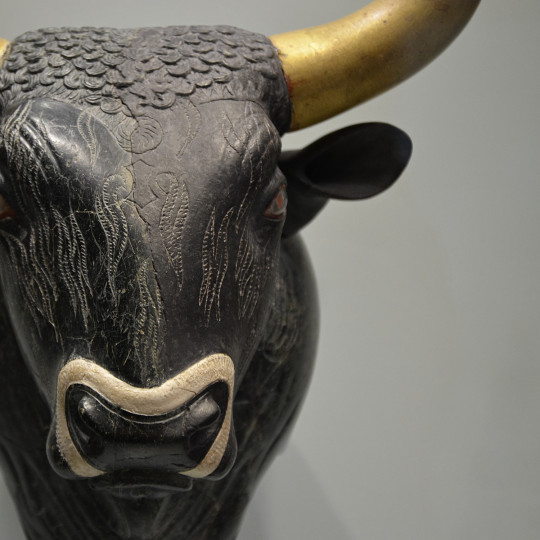
As the cradle of European civilization and a meeting place of diverse cultures, Crete is a magical island that stands apart in the heart of the Mediterranean sea. Its prominent place in world history dates back to the mysterious and fascinating Bronze Age civilization of the Minoans, who were building lavish labyrinth-like palaces at a time when Athens was just a village. In the Odyssey, Homer describes Crete as a rich land, filled with countless people who speak several languages. The location of this mountainous island, at a crossroad of three continents, has been a natural outpost of consecutive invaders, including the Greeks, Romans, Venetians, and Ottomans, who have left their mark on Cretan culture. Remainders of Crete's extraordinary past are scattered all over the island. Today, travellers come to explore and discover not only its five-millennium-old history but also its extraordinary natural beauty and diversity. As I journeyed through the Cretan landscape, I visited its most important ancient sites, including the famous Minoan palaces, but also veered off the beaten track to explore the lesser-known archaeological remains. In this tour of western Crete, I invite you to delve into the long and rich history of this fascinating island. The Minoan civilization emerged on the island of Crete in the Early Bronze Age at the end of the third and beginning of the second millennium BCE. It flourished from c. 2000 BCE until c. 1500 BCE with the establishment of centres, called "palaces" by modern archaeologists, that concentrated political and economic powers, as well as artistic activities. Of particular significance was the religious role played by the palaces in the cult of the Mother Goddess. These impressive edifices were built at Knossos and Malia in the northern part of the island, at Phaistos in the south, and Zakros in the east, all sites with a rich agricultural hinterland and direct access to the most important sea routes of the time. The British archaeologist Sir Arthur Evans discovered the first of these palaces in Knossos in 1900 CE and named the people who built them after the legendary King Minos. It was King Monos who, according to tradition, ordered the construction of a labyrinth in Knossos to hold the Minotaur, the mythical half-man, half-bull creature. The Minoan culture spread throughout the entire eastern Mediterranean world and its stunning art and architecture deeply influenced the Mycenaean Civilization (1600-1100 BCE) that would succeed it. After the downfall of the Mycenaeans, Crete was ruled by various ancient Greek city-states until the Romans conquered the island in 69 BCE and made Gortyn their capital. Under Roman rule, Crete re-emerged as a major cultural centre and became the joint province of Crete and Cyrenaica and a centre of early Christianity. When the Roman Empire split into two, Crete was made part of the Eastern Empire. It continued to prosper during the Byzantine era until it faced repeated Arab raids and, ultimately, full conquest in the 820s CE. Today the central and western parts of the island are blessed with archaeological treasures which include the famous sites of Knossos, Phaistos and Gortyn but also Aptera, Phalasarna and Eleutherna, all with significant architectural remains as compelling evidence of Crete's long and varied history.
115 notes
·
View notes
Text

17th-Century Pirate 'Corsair' Shipwreck Discovered off Morocco
Wreck-hunters have discovered the remains of a small 17th-century pirate ship, known as a Barbary corsair, in deep water between Spain and Morocco.
The wreck is "the first Algiers corsair found in the Barbary heartland," maritime archaeologist Sean Kingsley, the editor-in-chief of Wreckwatch magazine and a researcher on the find, told Live Science.
The vessel was heavily armed and may have been heading to the Spanish coast to capture and enslave people when it sank, its discoverers said.
But it was carrying a cargo of pots and pans made in the North African city of Algiers, probably so that it could masquerade as a trading vessel.
Florida-based company Odyssey Marine Exploration (OME) located the shipwreck in 2005 during a search for the remains of the 80-gun English warship HMS Sussex, which was lost in the area in 1694.
"As so often happens in searching for a specific shipwreck we found a lot of sites never seen before," Greg Stemm, the founder of OME and the expedition leader, saide in an email.
The 2005 expedition also found the wrecks of ancient Roman and Phoenician ships in the area, Stemm said.
News of the corsair wreck is only being released now, in a new article by Stemm in Wreckwatch, after extensive historical research.
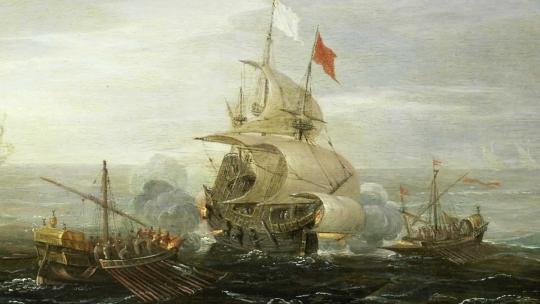
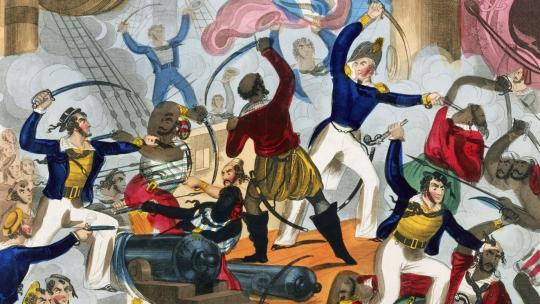
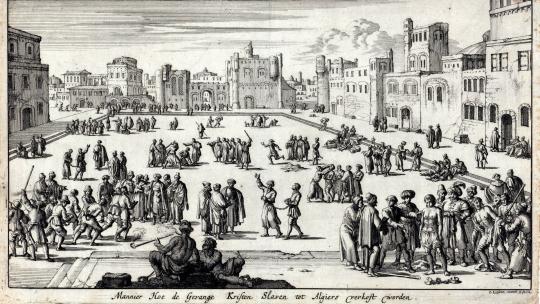


Dread pirates
The Barbary corsair pirates were predominantly Muslims who began operating in the 15th century out of Algiers, which was then part of the Ottoman empire.
Much of the western coastline of North Africa, from modern-day Morocco to Libya, was known as the "Barbary Coast" at the time — a name derived from the Berber people who lived there; and its pirates were a major threat for more than 200 years, preying on ships and conducting slave raids along the Mediterranean and Atlantic coasts of Europe.
The people captured in the slave raids were held for ransom or sold into the North African slave trade that operated in some Muslim countries until the early 20th century.
But the piratical activities of the Barbary corsairs came to an end in the early 19th century, when the pirates were defeated in the Barbary Wars by the United States, Sweden and the Norman Kingdom of Sicily in southern Italy.
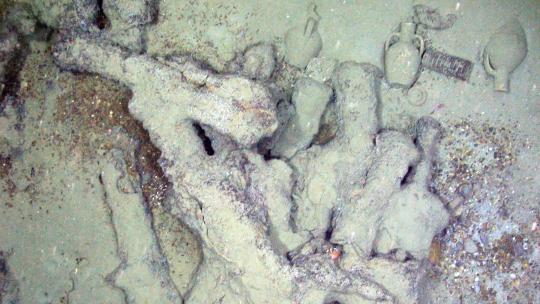
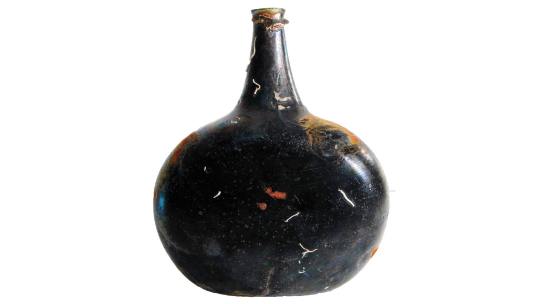
Sunken ship
The corsair wreck lies on the seafloor in the Strait of Gibraltar, at a depth of about 2,700 feet (830 meters).
The ship was about 45 feet (14 m) long, and research indicates it was a tartane — a small ship with triangular lateen sails on two masts that could also be propelled by oars.
Tartanes were used by Barbary pirates in the 17th and 18th centuries, in part because they were often mistaken for fishing vessels, meaning other ships wouldn't suspect pirates were onboard, Kingsley said.
"I've seen tartanes described as 'low-level pirate ships,' which I like,” Kingsley said.
The wreck hunters explored the sunken corsair using a remotely operated vehicle (ROV), which revealed the vessel was armed with four large cannons, 10 swivel guns and many muskets for its crew of about 20 pirates.
"The wreck neatly fits the profile of a Barbary corsair in location and character," Kingsley said. "The seas around the Straits of Gibraltar were the pirates' favorite hunting grounds, where a third of all corsair prizes were taken."
Stemm added that the wrecked ship was also equipped with a very rare "spyglass" — an early type of telescope that was revolutionary at the time and had probably been captured from a European ship.
Other artifacts of the wreck support the notion this was a pirate ship laden with stolen goods.
"Throw into the sunken mix a collection of glass liquor bottles made in Belgium or Germany, and tea bowls made in Ottoman Turkey, and the wreck looks highly suspicious," he said. "This was no normal North African coastal trader."
By Tom Metcalfe.
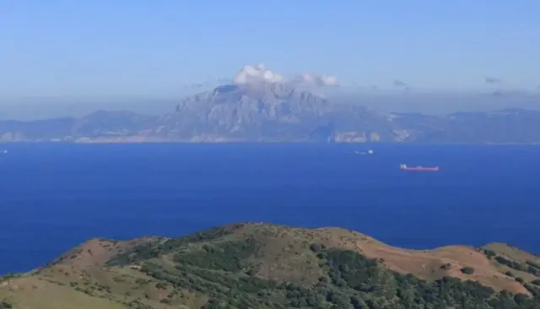
#17th-Century Pirate 'Corsair' Shipwreck Discovered off Morocco#Barbary corsair#pirate ship#shipwreck#Strait of Gibraltar#ancient artifacts#archeology#archeolgst#history#history news
124 notes
·
View notes
Text
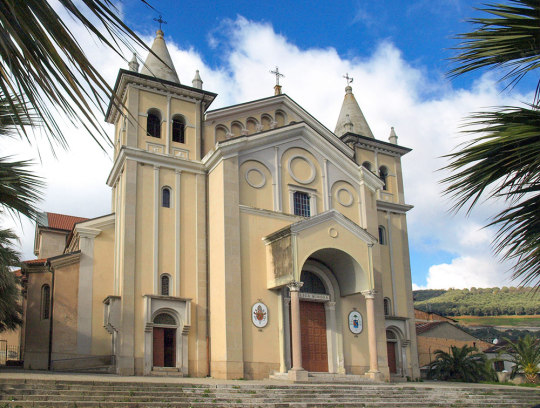
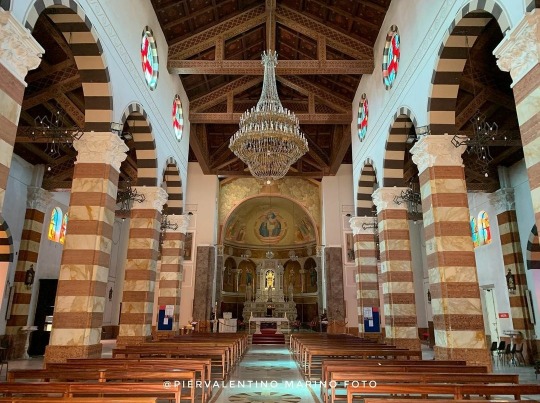
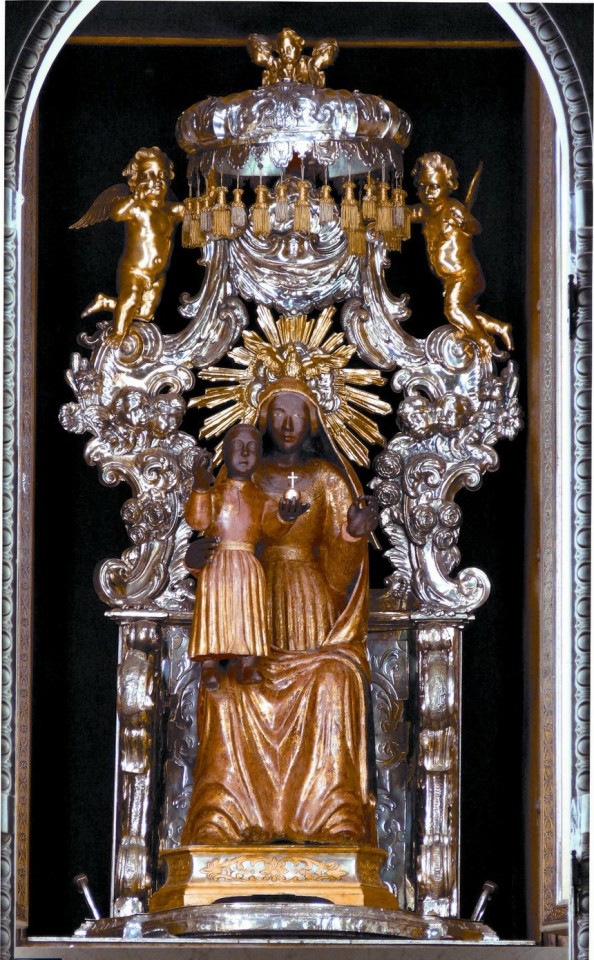
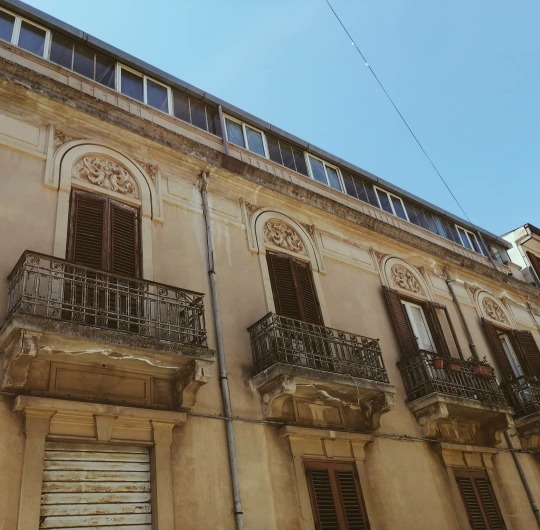
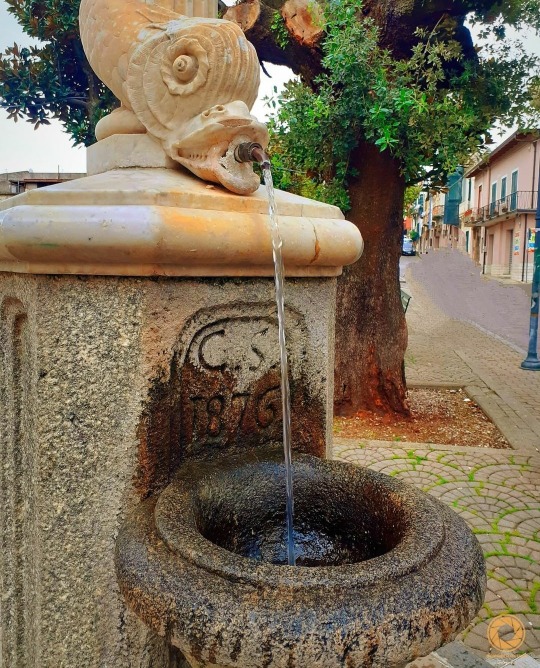
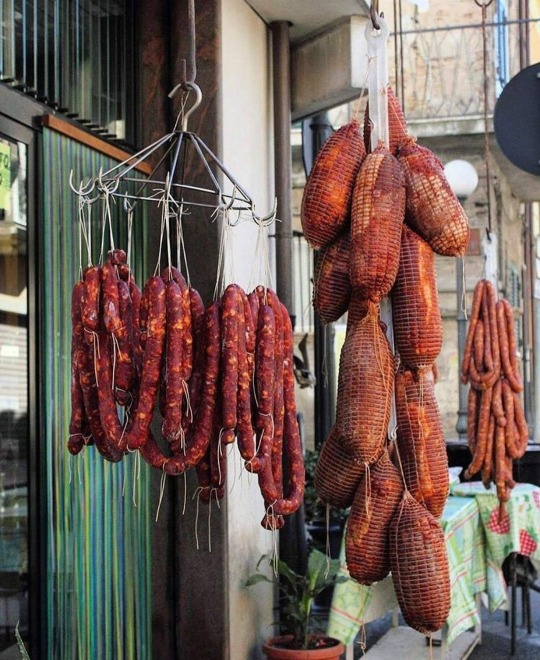
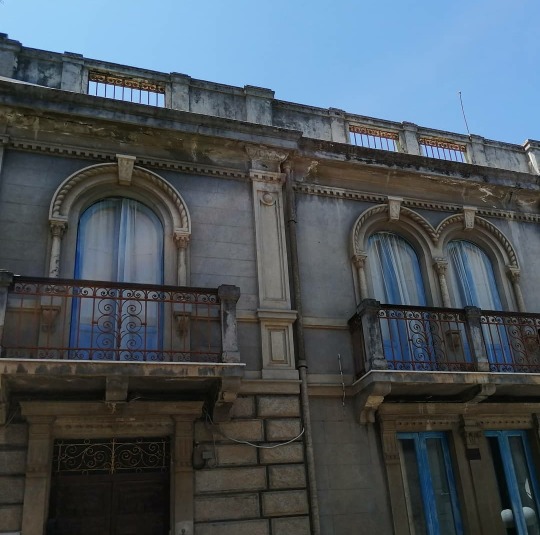
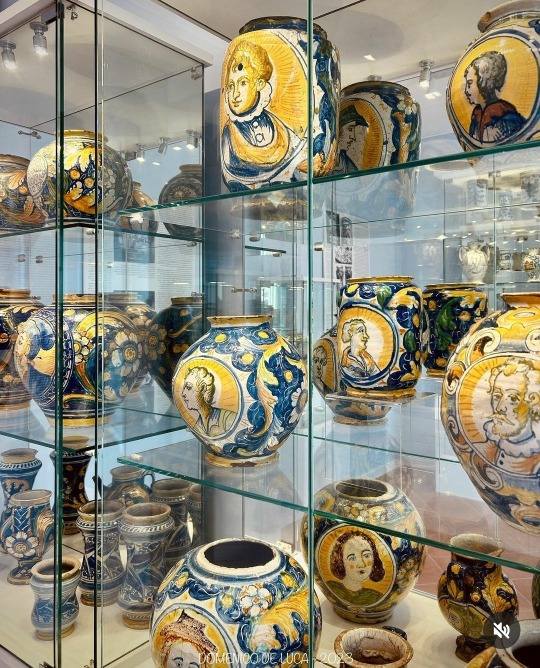
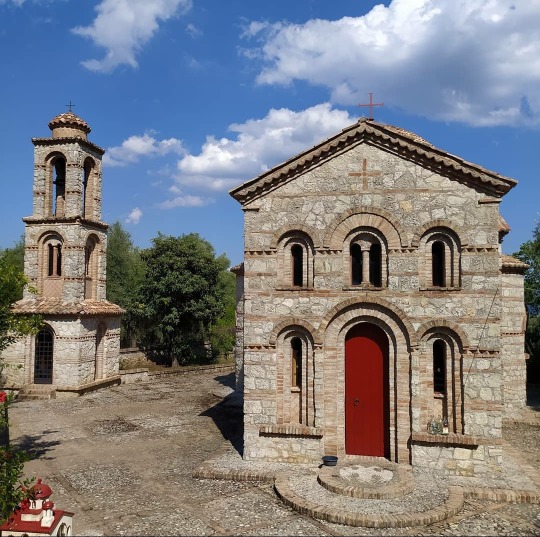
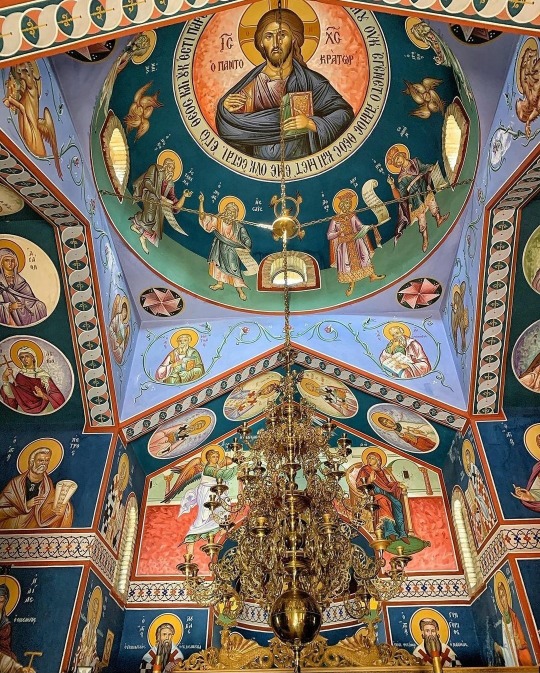
Seminara, Calabria, Italy
Seminara is located at the tip of the Italian boot about 30 kilometers (19 miles) north of Reggio Calabria. Its noteworthy political past includes turn-of-the-15th-century battles associated with the Italian Wars and a 1535 visit by the Holy Roman Emperor Charles V, who entered Seminara in a triumphal cortege to celebrate his victory over the Ottomans in Tunis.
Historically, the town has also had a reputation for its fine olive oil and silk.
Its two most distinguished citizens reflect southern Calabria’s Greek heritage, which endured long past the periods of Greater Greece and the Early Middle Ages when Orthodox Churches were established throughout the territory. Barlaam of Seminara (1290-1348) was an influential Byzantine-Greek clergyman and philosopher, and Leonzio Pilato (died 1364) was the first to translate Homer’s Iliad and Odyssey into Latin. His translations were used by the likes of Petrarca and Boccaccio.
The sanctuary of Maria Santissima dei Poveri is the main place of worship in Seminara, a town in the city of Reggio Calabria. It is well known because it preserves the statue of the Madonna dei Poveri, known as the Greek Black Madonna of San Basilio Magno. It is the oldest wooden statue in Calabria, carved in cedar wood and covered in gold and with its 92 cm, it is the second tallest black Madonna in the world, after that of Verdelot, in France.
In Seminara there is also one of the most interesting Greek Orthodox monastery of Southern Italy. Founded in 9th century by Sant’Elia of Enna, a Sicilian monk who lived in asceticism in a nearby cave, the monastery was endowed with rich goods and privileges by the Byzantine emperor Leo VI the Wise, who appreciated its sanctity and wisdom.
The monastery soon became a center of spiritual and cultural radiation, attracting numerous disciples and pilgrims, including the famous Filareto l’Ortolano, who died there in the odor of sanctity.
Unfortunately, it duffered the historical vicissitudes of Calabria, including invasions, earthquakes and persecutions. In the 16th century, following the forced Latinization of the Southern Orthodox churches, the monastery was abandoned and fell into ruin. 9th century Greek Orthodox Monastery. It was restored in 2005 and is now open for pilgrims and travelers.
Photos by Calabria Straordinaria, @piervalentino_pierva, @karim.ayed.1976, @dmncdlc, @morgana_zeta, , @esplorando_dietro_casa e @giuliaeats
Follow us on Instagram, @calabria_mediterranea
#seminara#calabria#italy#italia#south italy#southern italy#mediterranean#architecture#art#sculpture#sculptures#black madonna#greek orthodox#orthodox christianity#religion#byzantine#history#italian#europe#greek#church#churches
35 notes
·
View notes
Note
hello! i hope you’re having a wonderful day 💕 i wanted to ask if you know of, or have any literature or book recommendations that surround Ottoman Era Greece, The Revolution or the 19th century? i’ve been trying to find stuff but all that comes up is greek myth retellings it’s rather annoying 😭. if they have an english translated version that would also be superb! fiction or nonfiction i don’t mind, i’m just super keen to read and learn more about that era of Greek history many seem to overlook. Thank you so much! btw i love your blog so much.
Hello! Very sorry for being late to answer this but I was gathering books. While I have read historical articles and texts on the Revolution and the Ottoman period, they were in Greek. I will list here books I found in English, mostly by foreign authors. I checked them and they seem mostly fine (I usually try to avoid those with specific western agendas in the descriptions, and generally I am trying to show the most objective works. Please make sure to read more than one, so you can see multiple perspectives. I'm sure there will be biases here and there xD
Historical Books
Stories Of The Greek Nation - In Today's Language: (14th and 15th Volumes) - Paparrigopoulos Konstantinos (Also published by National Geographic in 2004)
The Greek world under Ottoman and Western Domination: 15th-19th centuries - Kitromelides Paschalis
Greece, The Hidden Centuries. Turkish Rule From The Fall Of Constantinople To Greek Independence - Brewer David
The Edinburgh History of the Greeks, 1453 to 1768: The Ottoman Empire - Molly Greene
Viewing The Morea: Land And People In The Late Medieval Peloponnese
Ottoman Cyprus: A Collection of Studies on History and Culture (Near and Middle East Monographs) - Matthias Kappler, Eftihios Gavriel
Ottoman Brothers: Muslims, Christians, and Jews in Early Twentieth-Century Palestine - Michelle U. Campos
Crypto Christianity And Crypto Christians In the Southern Balkans, Asia Minor and Cyprus - Athanasios Dimitrios (Protopresbyter)
Sephardi Lives: A Documentary History, 1700–1950 - Julia Phillips Cohen and Sarah Abrevaya Stein
A Jewish Voice From Ottoman Salonica: The Ladino Memoir Of Sa'adi Besalel A-Levi - Halevi Saadi Ben Betsanel
The History of Greece under Ottoman and Venetian Domination - George Finlay
Jewish Salonica: Between the Ottoman Empire and Modern Greece Devin E. Naar Stanford University Press
The Genocide Of The Ottoman Greeks - Studies On The State-Sponsored Campaign Of Extermination Of The Christians Of Asia Minor (1912-1922) And Its Aftermath: History, Law, Memory
The Greek Revolution
Ioannis Makrygiannis Memoirs (Makrygiannis is a Revolution Hero) Theodorou Kolokotroni Memoirs (Memoirs – Court Case) (Kolokotronis is a Revolution Hero)
Deligiannis: Memoirs - Deligiannis Kanellos (Deligiannis is a Revolution Hero)
The Greek Revolution - A Critical Dictionary - Kitromilides Paschalis, Tsoukalas Constantinos
Collective works: Stories Of The Greek Nation (Sixteenth Volume): Contemporary Hellenism From 1941 To The End Of The Century . (Publisher: Athens Publishing House)
Poems
The Cretan - Dionysios Solomos
The Free Besieged - Dionysios Solomos
Works by Rigas Feraios
Fiction
Imaret - In The Shadow Of The Clock - Yiannis Kalpouzos
Niove's Children - Tasos Athanasiades
Number 31328 - Elias Venezis (A true story in a literary style)
Bloodied Earth – Dido Sotiriou
Ottoman Odyssey: Travels Through A Lost Empire by Alev Scott
Please suggest more books if you have something in mind!
11 notes
·
View notes
Note
I know we often talk about all the regions of Greece plus the Islands, but what about Thessaly region? It's so underrated even though it has Olympus, meteora, beautiful places, forests to go. Not only that but wasn't part of king Aiolou in the Odyssey?
This region in my opinion is not talked enough about it's culture and history i am sure even from ancient times it has given a lot to Greek history.
Yay let's give some love to Thessaly! I share your feelings. I like this region a lot. So let's make a post with cool facts about Thessaly.

But before that I would like to comment on why Thessaly appears to be overlooked. I think the reason is that Thessaly is in between two regions that have attracted so much the interest of historians. It is sandwiched between Argos, meaning all of south Greece with Athens and Sparta and all the load of city states, and Macedonia. It gets more or less the same treatment with Epirus. Furthermore, Thessaly's biggest power is also its weakness. Thessaly is what is considered the "breadbasket" of the nation. An essentially provincial agricultural area, vast as nowhere else in Greece, it did not intrigue as much as the other regions with their drama, polities, conquests or artistic and scientific achievements.
Cool facts about Thessaly:
Despite its later obscurity with historians, exactly because of its vast fertile land, Thessaly had some of the earliest advanced settlements in Europe during the Neolithic period, such as Sesklo (6800 BC) and Dimini (4800 BC).
In the Mycenaean Age, Thessaly was known as Aeolia. The dialect spoken was Aeolic Greek. The Homeric epics are written in a mix of Ionic and Aeolic Greek. Aeolic Greek was considered the ideal dialect for poetry and lyricism. Poets and Rhapsodoi would travel to Thessaly to find inspiration.
Thessaly has paramount significance for the Greek mythology. Mount Olympus is located where Thessaly and Macedonia meet, so this is where the Gods lived. Achilles was born and reigned in Thessaly (his kingdom encompassed Phthia and extended beyond the Thessalian borders into Hellas, the westernmost meeting point of Thessaly, Epirus and Central Greece). Centaur Chiron raised many heroes in Mount Pelion, which is the origin place of centaurs. Jason and the Argonauts embarked for their journey from the city of Iolcos (now Volos). And loads more myths are associated with Thessaly.
Thessaly was somewhere between the world of the southern city states and the Kingdom of Macedon. It was usually a kingdom too or dismantled in a few smaller kingdoms ruled by the tagoi, aristocratic warlords. During the early classical period, Thessaly started being influenced by democracy however after observing the rise of Macedon, the Thessalians essentially invited King Philip to incorporate the region into his sphere of influence and Thessaly returned into having one single powerful king.
It is kinda evident that the Thessalians just wanted to live their lives and were absorbed with their own matters, trying to stay away from most drama. That lack of drama earns them their obscurity. Of course there were microdramas between nobility and kingdoms and all that but honestly nothing in comparison to the southern mayhems or the excessive northern ambition. Despite their low profile, Thessalians were wanted in other Greek armies for their cavalry.
During Roman and Byzantine times, the region was constantly targeted by invaders including Slavs, Avars, Huns etc due to its fertile land. This made the Byzantine emperors often remove or transfer away foreign populations from the area and have Greeks from other regions to settle in, to reinforce the Greek element of the region.
Much like in all other eras of its history, Thessaly was somewhere in the middle during the stages of the Greek Independence from the Ottoman Empire. It was incorporated to Greece after Peloponnese and Roumeli (Sterea Hellas) but before Epirus, Macedonia and Thrace.
Thessaly is a diverse land. It has a core of extended farmland dotted with hills and mountains as well as rivers and lakes, surrounded by a ring of big mountain ranges. At its west it expands to the Pindus mountains and their woodlands, at its north lies Mount Olympus and its east finds the Aegean sea and boosts a remarkable coastline. It also has three major islands, generally considered some of the most densely forested in the country and with beaches often featured in Top lists across the world. Sightings of seals and dolphins are common near its coasts.
Due to its geomorphology, the Thessalian plain gets some of the hottest temperatures in the summer and some of the coldest in the winter.
Thessaly is home to the most significant natural wonder of Greece. The rocks of Meteora. Meteora is a group of massive rock formations dating to the Paleogene era when this area was still part of the seabed, before the sea was pushed upwards and away. Meteora have been inhabited by monks ever since the middle Byzantine period. It has 20 Byzantine and post-Byzantine monasteries, out of which six are still in service. Aside from a natural wonder, the region is also a UNESCO world heritage monument.
After the independence, the region prospered due to being the largest farmland in Greece as well as having the third largest port in the country. It is the third most populous region after Sterea Hellas (which has Athens) and the large Macedonia (which has Thessaloniki). As a result, Thessaly is the only region in Greece with two major cities of about the same population, Larissa and Volos, the 5th and 6th largest cities of the country respectively, in close proximity. Larissa boasts an ancient past associated to Achilles and is the metropolis of agricultural and industrial Greece, all while buzzing with nightlife and a lot of student life. The also mythologically rich Volos is the Thessalian port, ensured with prosperity even during the hardship of Ottoman times, and is very notable among Greeks and those few foreigners who know for being surrounded from all sides by beautiful scenery, including very forested mountains, hills, extended shorelines, peninsulas, islands and numerous beautiful villages which combine tradition with a cosmopolitan flair.
The rest of the region is decorated by the rare outstanding mountainous beauty of Trikala, which also encompasses Meteora, and is one of the towns in Greece more focused on improving the quality of life for its citizens, often becoming a point of reference for other places. Karditsa with its traditional feel completes the quartet, offering access to the beautiful Lake Plastira and Agrafa mountains, some of the most unexplored and undisturbed, both naturally and culturally, regions of Greece.
And now some photos from Thessaly under the cut. Enjoy!
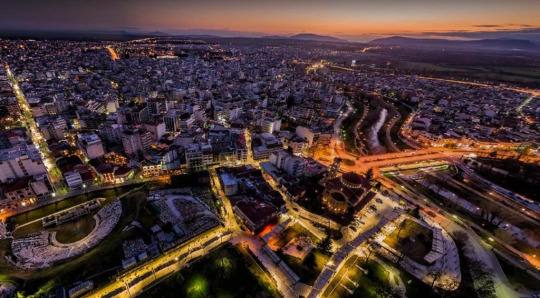




Various regions of Larissa


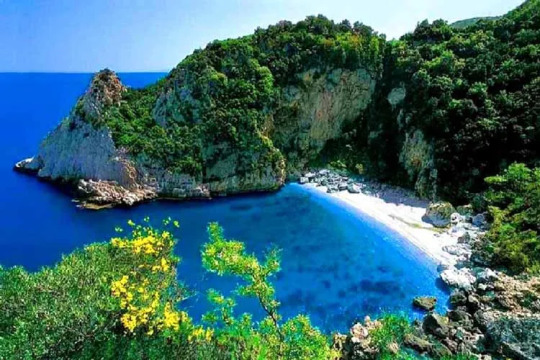

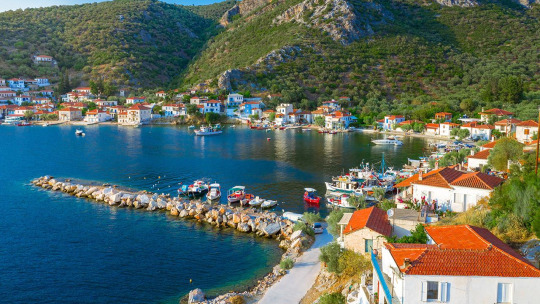

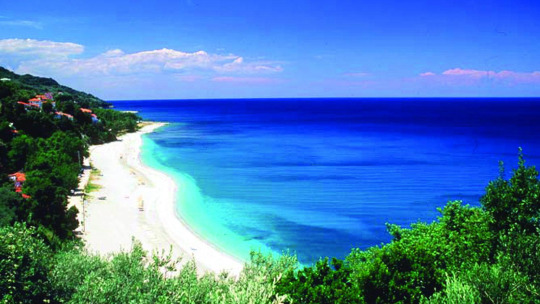
Various regions of Magnesia (Volos)

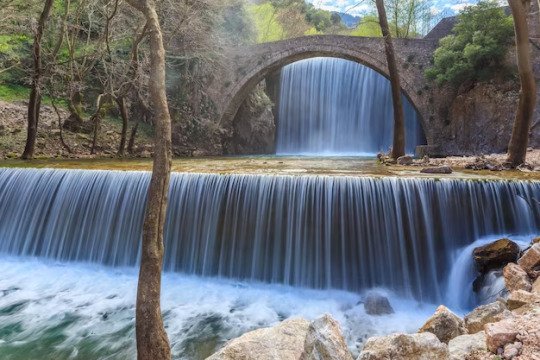



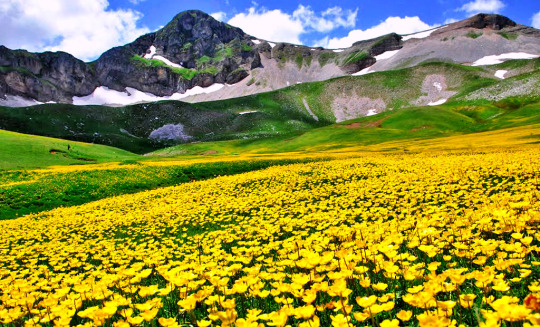
Various regions in Trikala
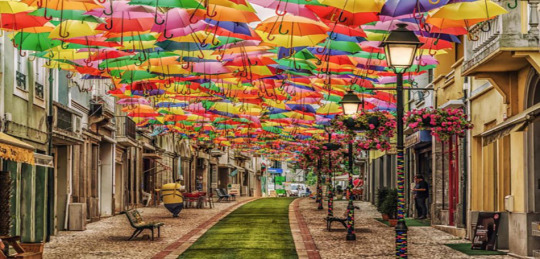
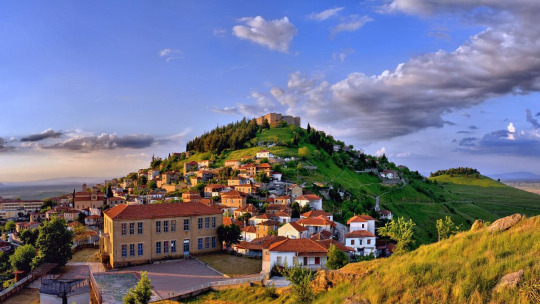



Various regions in Karditsa


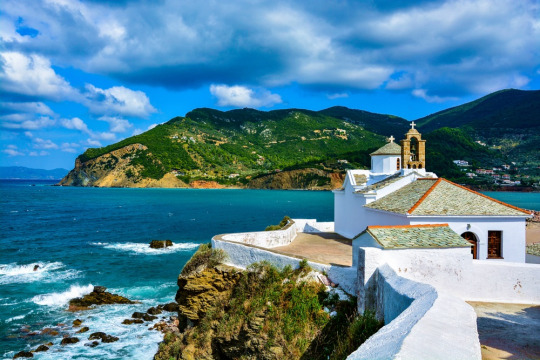

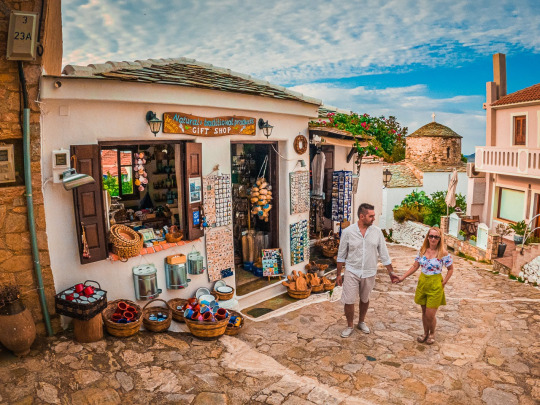

Various regions from Sporades islands
All photos chosen randomly in Google search just to give you an idea. I do not own any of these.
Hopefully you enjoyed this tribute Anon!
Also, to anyone wondering "wasn't this supposed to be a farmland?", well yeah, it is by Greek standards. The farmland is indeed very big, it's just that if I showed many photos from the plain I would be running short of mountains and coasts. And also, Greeks typically don't take photos of their plains as often so I'd had to make a more strenuous search.
#greece#europe#travel#travel guide#photography#locations#landscape#history#greek facts#greek history#mainland#greek islands#thessaly#larisa#magnesia#volos#karditsa#trikala#meteora#skiathos#skopelos#alonnisos#sporades#sporades islands
49 notes
·
View notes
Photo

At times they are good and quiet company, the dead; they will not interrupt your musings, but when they speak, whether they be Jews or Turks or heathens, they will speak in a tongue all can understand. there are even countries where the moving, breathing people are less intelligible, dwell in a world further apart form you, than that silent population under the earth.
- Gertrude Bell, Persian Pictures (1894)
They buried her in Baghdad. This is the short sentence ending the biography of one of the most important women in recent Middle Eastern history. Gertrude Bell, "Queen of the Desert", as the film by Werner Herzog called her. Or "Mother of Iraq", as the inhabitants of the region between the Euphrates and the Tigris describe the woman who brought them both a blessing and a curse.
The search for her grave in the Iraqi capital is something akin to a small-scale odyssey. She is not buried at the British memorial cemetery in the heart of Baghdad in Bab al-Muadam. In this cemetry lie soldiers of his majesty, King George V of Great Britain. Most fell in 1917. A small mausoleum has been erected on the extensive site for Sir Frederick Stanley Maude. The General made a name for himself in the campaign on the Mesopotamian front during the First World War, as conqueror of Baghdad. Following the invasion of Iraq by British and American troops in 2003, the British named their headquarters in Baghdad's Green Zone "Maude House".
She’s not even buried in the Christian Armenian cemetery. When the woman that created Iraq died, on 12 July 1926 in her adoptive city of Baghdad in circumstances still unexplained to this day, she had already lost considerable influence.
A secret agreement between the governments of Britain and France had already decided on the allocation of the Ottoman spoils of war. But it would be another two years before the final demise of the Turkish Empire. Nevertheless, the new Middle Eastern order was a done deal and would from that moment bear the signature of Gertrude Bell.

Initially an unofficial employee of the British secret service, and later as a political liaison officer ranked as a major and 'oriental secretary', she played a decisive role in the foundation of modern Iraq and was a close confidante of the Iraqi King Faisal I, who initially became King of Syria. When the French hounded him out, the British installed him in Baghdad on Bell's insistence.
Thereafter, the Hashemite King no longer needed Bell and the English also distanced themselves from a woman who was highly unusual for her time. This explains why she did not find her final resting place at the British memorial cemetery.
There was intense animosity between Gertrude Bell and Mark Sykes, one of the two leaders in the negotiations to reach the secret agreement. He called her a "flat-chested, man-woman, globe-trotting, rump-wagging, blathering ass." She, meanwhile, accused him of huge incompetence.
This is because the agreement forged by Sykes together with his French counterpart Francois Georges-Picot was controversial at the time of its signing. Picot was the far more experienced partner in the negotiations and knew how to secure much more for France than expected. The agreement also contained serious contradictions. Whereas previously, Britain had pledged it would support the Arabs in the event of a revolt against the Ottoman Empire, and the prospect of recognising a subsequent Arab independence had been set out, France and Britain were now dividing up huge areas of the Arab territory between them and creating nations like Syria and Iraq.
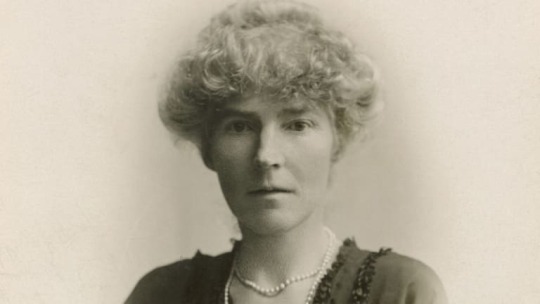
The Sykes-Picot agreement did however also contain, in the first paragraph, a reference that both France and Britain were willing to recognise and protect an independent Arab nation in the regions of the map marked with A and B. But within their spheres of influence, both countries retained privileges that would remain in place until the 1950s.
Gertrude Bell, who although employed in the service of the British, always lobbied for the interests of the Arabs, did not agree. Mark Sykes did not care. He was more interested in the fate of the Armenians, who had suffered under the pressure of the Ottoman Empire, than for the retention of the Arabs and the Kurds and threw his weight behind the emerging ambitions of the Jews for a territory in Palestine.
The development shows how bloody conflicts grew from these differing interests, and how these conflicts are now being exacerbated. The forcing together of the three ethnically and religiously diverse provinces of Mosul, Baghdad and Basra brought misfortune to Iraq. The kingdom was always unstable, and was toppled in a military putsch in 1958. The socialist Ba'ath Party seized power in 1968, and Saddam Hussein established his dictatorship in 1979. He held the nation together with what can only be described as archaic brutality.
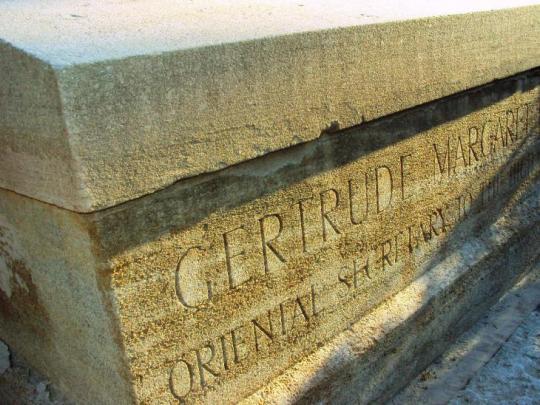
If you want to see the final resting place of Gertrude Bell you will have to find the small Anglican cemetery in the "Bab el-Sher Shi" neighbourhood on the eastern banks of the Tigris.
In the midst of mosques, churches, ministerial buildings, pot-holed streets and endless queues of cars, stands a stone sarcophagus with the inscription: Gertrude Margaret Lowthian Bell. A small bouquet of red and white plastic roses has been placed upon it.
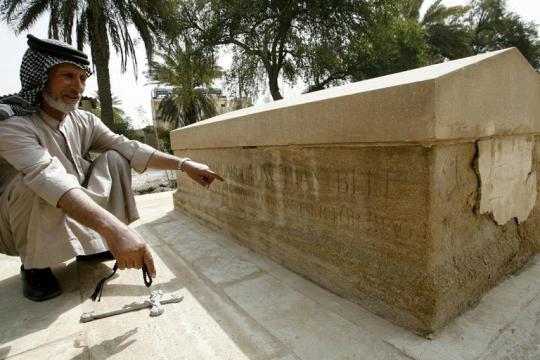
Asked about the significance of the dead woman to his country, an Iraqi friend says diplomatically: "There are good and bad sides to everyone." The same applied to Miss Bell. On the one hand she was responsible for the unfortunate border demarcation and the entity that is Iraq, which did not exist previously. But on the other, she was a perpetual champion of the cultural heritage of the nation and founded the Iraqi national museum. "She spoke our language, knew our clans, our customs and traditions,"
What she didn't know, my friend suggested, were the differences between Sunnis, Shias, Arabs and Kurds. "If she had, much of this could have been avoided."
#bell#gertrude bell#quote#cemetery#first world war#iraq#british#femme#archaeologist#culture#society#politics#imperialism#icon
35 notes
·
View notes
Text
The Unholy Blood Stained Land
Warning, this is a rant, you might not find logic in this but you will find facts and reality.
People are dying, men women and children are dying, and the have been for generations, long before the current conflict and genocide, long before modern Israel, the European empires, the Crusaders, the Ottoman Empire, the Islamic Caliphate, The Byzantium/Eastern Roman Empire, the ancient Israelite's all murdered people for the the land that has been dubbed “the holy land.” The people of Judea tried to fight off the Romans, fighting an empire they had no chance of winning against, all because they thought God would help them. God did not help them, God did not try to help them, God wasn't there, God didn’t care. If there is a God it doesn’t give a shit about that place, it never did. The only thing any god would give that land is the finger. All this death because people think and think that it is “holy” which is just another word for “magic”. You know who believes in magic? Children. You know who doesn’t believe in magic, adults. And yes if you think this blood stained land is “holy” I’m calling you a child, because you believe in magic!
This isn't a tangent, this has a point. Here is a quick synopsis of the Trojan war: Some goddesses came down and asked a mortal man who was the prettiest, they all tried to bribe the man. He chose Aphrodite who gave him to him the most beautiful woman in the land as a bride. Except she was already married to the king of Sparta. After she was whisked away to Troy the King of Sparta got all of Grease, hundreds of ships and thousands of men together to go lay siege to Troy. Which they did for ten years until they built a wooden horse and pretending to leave. The Trojans took in the wooden Horse, a bunch of Greeks came out, opened the gates and the Greeks killed everyone. Also Achilles was there, a demigod son of the goddess Nereid, and the other Greek gods got involved as well. It is here you should realize that this is a mythological story, it wasn’t meant as fiction to the ancient Greeks but history, they believed this was real history, gods, demigods, and all.
Troy was real, it was a real place and has been found. There is no evidence of this big war there, there is no evidence that the Trojan war happened at all. Troy was destroyed, multiple times but here is no evidence any Greeks were involved, or more specifically the Mycenaean's who were the precursors to the Greeks. It is possible they were responsible for Troy’s destruction, but not thousands of men on hundreds of ships, and there is no evidence for the Trojan Horse. Troy was destroyed, either a survivor or one of the destroyers told the story to others, who told the story to others, who then told others. The story got modified, exaggerated, and mythologized until it was written down by Homer. Except Homer might not have existed. We don’t know who wrote it down, or even if it was one person. The whole thing is a myth, a mythical cultural story that may or may not be based on actual events.
This is how all myths work. They are mythical cultural stories that are spread orally until they are eventually written down and then canonized. Some based on real events and/or real people, some completely fictional. This is how Greek myths worked, this is how Egyptian myths worked, and this is how Abrahamic mythology worked. It is how the Torah, the Old Testament Bible, new Testament and even Qur'an worked. It’s all myths, it is all mythology.
“But the bible mentions real places!” New York is real, Spiderman isn’t, there are multiple Springfields but The Simpsons are not real, all the places mentioned in The Odyssey are real places, but the individuals, gods, witches, and Cyclopes that were mentioned in the Odyssey were not real. “But we found evidence for people mentioned in the Bible!” Neil DeGrasse Tyson, Jerry Lewis, and Frank Sinatra are real and they all appeared in Superman comics, Superman and Metropolis are not real, many real people have appeared in The Simpsons, The Simpsons are not real, the movie Contact used a real speech given by President Clinton, Contact is fiction. These are stories, passed down orally, modified and mythologized over time. Some are based on real events, places, and/or real people, and some are complete fiction. Whether they are based on real events, places, and/or people, they are fiction. They are mythological cultural stories.
I'm not going to tell you that there is no God, I can’t know that just as you can't know one does exist. But if there is it never gave a damn about that blood stained unholy land, and if it for some reason did, it had forsaken that land long ago. You won’t find God there. And you won’t find God in any Church, Synagogue, or Mosque. If there is a Devil, you will find it in that blood stained unholy land, and you would find it in the Churches, Synagogues, and Mosques, you would find it behind the pulpit preaching. Because the Abrahamic religions are evil. All organized religions are inherently evil but the Abrahamic religions are worse, because they are religions who claim to have the magical truth no other religions have and a god that will give one an eternal joyful afterlife to the faithful to it.
There is no afterlife. All those murdered for this unholy blood stained land are gone, forever. Their lives cut short, all that they were and ever could have been was destroyed, all over a belief in magic, that that land is magical. These people were human sacrifices to that magical land and the Abrahamic God, there is no other way to put these murders but as human sacrifices. They are gone forever because of a infantile belief in magic.
I’ve said this before and I will say it again, and I will say it many times: There is no afterlife. This is all we have. So live your life and enable others to live theirs. Do not wait for a hereafter that is not there and don’t let the lives of others be wasted because of circumstances and social or religious doctrine. Do not oppress or let others be oppressed. Oppression wastes resources, life, and lives. We are all in this together, and this is all we have!
#politics#history#murder#genocide#mythology#holy#holy land#crusades#ottoman empire#roman empire#byzantium#conflict#israel palestine conflict
2 notes
·
View notes
Text
Paphos

Join me on a virtual odyssey to Paphos, a UNESCO World Heritage Site on the sun-kissed island of Cyprus. This enchanting city, steeped in mythology and historical significance, invites us to explore its ancient ruins, vibrant landscapes, and the allure of the Mediterranean.
Paphos secured its UNESCO World Heritage status in 1980, acknowledging its outstanding universal value as a site where myth, history, and archaeology converge. The inscription includes Paphos' role as the center of worship for Aphrodite and its exceptional ancient remains.
Step into the Archaeological Park of Kato Paphos, a sprawling open-air museum that unfolds the city's rich history. Marvel at ancient villas, intricate mosaics, and remnants of Roman architecture, transporting you back in time to when Paphos was a thriving metropolis.
Witness the commanding Paphos Castle, perched on the edge of the Mediterranean. Originally built by the Byzantines, the castle has witnessed centuries of maritime history, including the Ottoman and Venetian periods. Today, it stands as a symbol of Paphos' resilience.

Immerse yourself in Paphos' coastal wonders, from azure waters to picturesque harbors. The city's coastal charm invites leisurely strolls, seaside dining, and the embrace of the Mediterranean's soothing embrace.
Explore the Tombs of the Kings, an ancient necropolis carved from solid rock. Marvel at the grandeur of these burial sites, reminiscent of Greek and Egyptian architectural styles. The site offers a glimpse into the opulent burial traditions of Paphos' elite during antiquity.
Visit the legendary Aphrodite's Rock, the mythical birthplace of the goddess of love and beauty. According to legend, this sea stack emerged from the foam of the Mediterranean, where Aphrodite was born. The site exudes an ethereal beauty and a connection to ancient mythology.
Savor the flavors of Paphos with its delectable cuisine. From fresh seafood to traditional Cypriot meze, the city's culinary scene reflects its Mediterranean roots and diverse cultural influences.
In conclusion, Paphos invites us to unravel the threads of myth and history woven into its landscapes. When you're ready for a digital exploration of a city where ancient tales echo through time, Paphos promises to captivate and inspire. 🏛️🌊🇨🇾
#paphos#cyprus#europe#mediterranean#unesco#world heritage#culture#mythology#history#beauty#city#town#travel
4 notes
·
View notes
Text
Anthro Allies Remastered (Part 3)



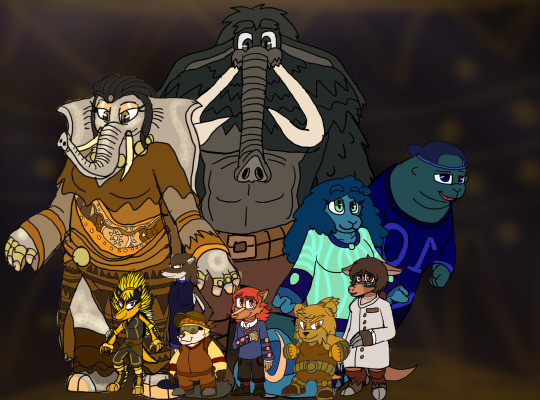
Bringing up next are part one of the Mammals
Monotreme
Oahc (Male Platypus)
Olympia (Female Platypus)
Owjima (Male Echidna)
Ofelia (Female Echidna)
Marsupials
Ottoman (Opossum)
Octavia (Monito del Monte)
Oliza (Macropod Hybrid)
Oggy (Potoroo/Bettong)
Onyx (Koala/Wombat)
Omar (Possum/Glider)
Opera (Marsupial Mole)
Orion (Bandicoot/Bilby)
Odyssey (Dasyuromorph hybrid)
Oliver (Marsupial Lion)
Xenarthra
Ancel (Banded Armadillo)
Rosado (Fairy Armadillo)
Fabric (Silky Anteater/Tamandua)
Alvin (Giant Anteater)
Duo (Two Toed Sloth)
Trio (Three Toed Sloth)
Afrotheria
Barb (Tenrec)
Trowel (Golden Mole)
Ravine (Otter Shrew)
Juji/Sergei ( Elephant Shrew)
Lottie (Aardvark)
Hank (Hyrax)
Serenity (Manatee)
Doug (Dugong)
Eloise (Elephant)
Packie (Mammoth)
Previous/Next
(For More Information About The Earthdemons, Neo demons, The Anthro allies , the O'Kong family and more of theses characters as well as updates please visit the @the-earthdemon-hub for more)
#my art#my ocs#elementalgod aj#aj the elementalgod#isle 0#Toonverse oc#The Watchful Eye#Watchful Eye#O'Kong Family#Earthdemons#Neo Demons#Anthro Allies#Mammals
5 notes
·
View notes
Text
Bursa Turkey 8 Powerful Reasons to Add It to Your Travel List
Bursa Turkey is a captivating destination that every traveler should explore. Known for its rich history and vibrant culture, this city offers an array of attractions, from stunning historical sites to delightful food tours. Whether you're planning your next trip from Istanbul to Bursa or seeking to uncover the top things to do in Bursa, WanderBite Odyssey has you covered. Dive into the best time to visit Bursa, explore its hidden gems, and discover why this city is a must-see on your travel list. Let our expert guide lead you through the wonders of Bursa, Turkey.

Discover the Rich History of Bursa Turkey
Bursa Turkey is renowned for its rich history, offering travelers a deep dive into the country’s cultural heritage. As one of the key cities of the Ottoman Empire, Bursa is home to numerous historical sites that reflect its glorious past. From the majestic Ulu Cami (Grand Mosque) to the beautifully preserved Bursa Citadel, these landmarks are a testament to the city’s significance in Turkish history. When exploring these bursa historical sites, you can’t help but feel transported back in time, witnessing the grandeur that once was.
So, what is Bursa Turkey known for? Beyond its historic structures, the city is celebrated for its role as the birthplace of the Ottoman Empire. Visitors can explore the ancient tombs of the empire’s founders in the serene Tophane Park. Each site in Bursa Turkey tells a unique story, making it a must-visit for history enthusiasts and those curious about Turkey’s past.

Iconic Attractions You Must Visit
Bursa Turkey boasts a wealth of iconic attractions that every traveler should experience. Among the top attractions in Bursa Turkey is the mesmerizing Green Mosque and Green Tomb, both showcasing stunning Ottoman architecture and intricate tile work. Another must-visit is the Bursa Grand Mosque, a masterpiece of early Ottoman design, offering a glimpse into the religious and cultural history of the region. For those interested in nature, the serene Uludağ National Park, famous for its ski resorts and lush landscapes, is a highlight of any Bursa city tour.
When planning your bursa travel itinerary, make sure to include the vibrant Cumalıkızık Village, a UNESCO World Heritage site, known for its well-preserved Ottoman houses and charming cobbled streets. Exploring these attractions offers a rich array of things to do in Bursa, from cultural immersion to outdoor adventures. Each site adds depth to your journey, making Bursa Turkey a destination that’s both captivating and unforgettable.

Delight in the Cultural Experiences
Delight in the cultural experiences that Bursa Turkey has to offer. Immerse yourself in Bursa’s rich cultural sites, such as the historic Koza Han, an ancient silk market with beautiful Ottoman architecture, and the intriguing Bursa City Museum. These sites are integral to understanding the unique heritage of the region.
In addition to its cultural treasures, Bursa Turkey is also renowned for its exceptional food tours. Don’t miss the chance to savor traditional dishes like Iskender kebab and Bursa’s famous chestnut desserts. These culinary experiences offer a delicious way to explore the local culture and are a must-do on any bursa travel itinerary. Whether you’re exploring historic sites or indulging in local flavors, Bursa Turkey promises an enriching and memorable journey.

Easy Accessibility from Istanbul
Traveling from Istanbul to Bursa Turkey is straightforward and convenient, making it an accessible destination for tourists. You can take a ferry from Istanbul to Yalova, followed by a short bus ride to Bursa. This route offers a scenic journey with the added benefit of avoiding traffic congestion. Alternatively, you can opt for a direct bus from Istanbul to Bursa.
For those seeking the fastest route, driving from Istanbul to Bursa is also a viable option. The journey via the O-5 highway covers around 150 kilometers and typically takes about 2 hours. Whether you choose to travel by ferry, bus, or car, getting to Bursa Turkey is convenient and efficient, ensuring that your visit to this historic city is both easy and enjoyable.

Experience World-Class Hospitality
Experiencing world-class hospitality is a highlight of any visit to Bursa Turkey. The city boasts a range of accommodations, from luxurious hotels to charming boutique stays. For top-notch comfort and service, consider staying at the historic Grand Swiss-Belhotel, offering a blend of traditional charm and modern amenities, or the contemporary Hilton Bursa, renowned for its excellent service and central location.
The best time to visit Bursa Turkey is during the spring or autumn months, from April to June and September to November. These seasons provide pleasant weather and are ideal for exploring Bursa's attractions, including its historical sites and cultural landmarks. Avoid the peak summer months to sidestep large tourist crowds and fully enjoy the city’s hospitality and scenic beauty.

Follow Us On:
Stay connected with us for the latest updates and tips on exploring Bursa Turkey. Follow us on Facebook and WhatsApp for real-time information and travel inspiration, or check out our YouTube channel for detailed guides and virtual tours of Bursa’s top attractions. Dive into engaging content and travel stories on our TikTok, and keep up with our latest blog posts on Blogspot to get the most out of your bursa travel experience. Whether you’re planning your trip or already exploring, our social media platforms offer valuable insights to enhance your visit to Bursa Turkey.
1 note
·
View note
Text
Unveiling the Enchantment of Eastern Europe: A Balkan Odyssey Through Prague, Budapest, and Vienna

Central Europe, a tapestry woven with rich history, captivating architecture, and vibrant culture, beckons Bangladeshi travelers seeking an unforgettable adventure. A meticulously planned Eastern European tour promises a treasure trove of experiences, transporting you to a realm where medieval charm dances with modern sophistication.
Enchanting Cities, Awaiting Exploration
Imagine yourself traversing the historical heart of Prague, the "City of a Hundred Spires." Witness the grandeur of Prague Castle, the largest ancient castle complex in the world, and lose yourself in the enchanting melody of the Astronomical Clock on the Old Town Hall. Stroll across the iconic Charles Bridge, adorned with baroque statues, and soak in the vibrant atmosphere of the Old Town Square, its cobbled streets brimming with history.
Budapest, the "Queen of the Danube," awaits with its architectural marvels. Immerse yourself in the thermal bath culture, a legacy of the Ottoman Empire, and unwind in the majestic Szechenyi Baths, the largest medicinal bath in Europe. Marvel at the architectural grandeur of the Hungarian Parliament Building, a neo-gothic masterpiece overlooking the Danube River. Ascend Buda Castle, a historic fortress offering panoramic views of the city, and delve into the rich tapestry of Hungarian history.
Vienna, the imperial capital of Austria, beckons with its timeless elegance. Explore the magnificent Schönbrunn Palace, a UNESCO World Heritage Site, and wander through its sprawling gardens. Immerse yourself in the world of classical music at the Vienna State Opera House, where the likes of Mozart, Beethoven, and Strauss once captivated audiences. Explore the Kunsthistorisches Museum, housing an impressive collection of art from the Habsburg dynasty, and delve into Vienna's rich artistic heritage.
Beyond the Tourist Trail
Venture beyond the well-trodden tourist path and discover hidden gems. Explore the charming town of Český Krumlov in the Czech Republic, a UNESCO World Heritage Site known for its medieval architecture and picturesque setting. In Budapest, take a Danube River cruise and witness the city illuminated at night, a truly magical experience. For the history buffs, delve into the poignant remnants of the Berlin Wall, a potent symbol of Europe's turbulent past.
Crafting Your Dream Eastern European Escape
Several Bangladeshi travel agencies specialize in crafting customized European tours, including Roomchai Limited. They can assist you in designing a tour that perfectly aligns with your interests and preferences. Whether you crave historical immersion, artistic exploration, or a delightful blend of both, these agencies work tirelessly to curate an itinerary that brings your dream Eastern European adventure to life.
Benefits of Utilizing a Travel Agency
When embarking on a journey to unfamiliar territory, the advantages of partnering with a reputable travel agency are undeniable. Travel agencies in Bangladesh, like Roomchai Limited, Conquers Tours, and Far outbound Ltd., possess extensive knowledge of the region, ensuring a seamless travel experience. They can handle everything from visa applications and flight bookings to accommodation arrangements and local tours, allowing you to unwind and savor every moment of your exploration.
Unveiling the Magic for Yourself
Eastern Europe boasts a captivating blend of history, culture, and architectural marvels. Partnering with a Bangladeshi travel agency ensures a well-organized and hassle-free exploration, allowing you to return home with a treasure trove of memories. So, start planning your Eastern European adventure today and embark on a journey that will leave you spellbound.
A Few Helpful Tips
The best time to visit Eastern Europe is during the spring (April-May) or fall (September-October) months, when the weather is pleasant.
Familiarize yourself with the local currency (Czech Koruna, Hungarian Forint, and Euro) and consider exchanging some Bangladeshi Taka before your departure.
Learning a few basic phrases in the local languages can go a long way in enhancing your experience.
Pack comfortably for walking tours and cobbled streets, but don't forget an elegant outfit for a night at the opera.
Eastern Europe awaits with open arms, promising an adventure that will linger in your memory long after you return home. Start planning your dream escape today!
#EasternEurope#BalkanOdyssey#Prague#Budapest#Vienna#CzechRepublic#Hungary#Austria#TravelBangladesh#RoomchaiLimited (or whichever travel agency you choose)#EuropeanAdventure#HistoryBuff#ArchitectureLover#CulturalImmersion#TravelAgency#HiddenGems#CeskyKrumlov#DanubeRiverCruise#BerlinWall#TravelTips#SpringGetaway#FallFoliage#LocalCurrency#BasicPhrases#PackSmart#UnforgettableMemories#StartPlanningToday
1 note
·
View note
Text
ONE LAST KISS BEFORE WE FALL ; GUESS THAT MAKES IT PERSONAL
virginie 'ginnie' sinyavsky (suki waterhouse)
odyssey 'odie' dorado - whitley
koda constantine jacobs
howard 'hoodie' sellier (finn cole)
tomas valladares (fabrizio guido)
wolfgang 'wolf' ottoman (ludwig ahgren)
ethel ottoman (mia goth)
aviva roux (megan thee stallion)
teagan mora (xolo mariduena)
atticus de-la rouche (emilio sakraya)
devon averescu (neriah fisher)
maddox discanio (lukas gage)
bryce archer (sean keaufman)
enzo bemis (anthony turpel)
tucker fowler (will poulter)
farah savafi (tarayummy)
aksel heroux (ryan gosling)
demetria maier (valkyrae)
nala ottoman (kalynn koury)
wayland vycarro (rachel sennott)
sorcha yadav antonov (evan roe)
rhett boudreau (sam claflin)
1 note
·
View note
Text
A Culinary Odyssey: Turkish Delights at Baraka Restaurant London
Baraka Restaurant London invites diners to embark on a culinary journey through the rich flavours of Turkey right in the bustling heart of London's Finsbury Ave, Broadgate. This esteemed dining establishment serves as a gateway to Anatolia's diverse and historic palates, offering an authentic experience that reflects the cultural mosaic shaped by millennia.
At Baraka, the cuisine is a homage to the varied civilizations that have left their mark on Turkish culinary heritage. From the Sumerians to the Ottomans, each dish resonates with the echoes of ancient traditions. The restaurant prides itself on its succulent grilled meats, crisp, fresh salads, and hearty, traditional sides, each prepared with meticulous attention to detail and authentic techniques.
The ambience at Baraka Restaurant London is crafted to complement the gastronomic experience. The decor encapsulates the essence of Turkish hospitality and charm. Ideal for romantic evenings, family gatherings, or casual meals with friends, the restaurant provides a warm, inviting atmosphere that enhances the dining experience.
Patrons are encouraged to reserve a spot at this popular destination. Baraka Restaurant London is not merely a place to eat; it is a destination to experience Turkey's profound flavours and stories. A visit here promises a dining journey that not only tantalizes the taste buds but also transports diners to Anatolia's picturesque landscapes and rich history.

1 note
·
View note
Text
Istanbul Unveiled: Cultural Odyssey with Package Tours Turkey
Package Tours Turkey invites you to experience the enchanting city of Istanbul like never before with our meticulously crafted tours that promise an unforgettable journey through its rich tapestry of history, culture, and natural beauty.
Delve into Istanbul's ancient heritage as you wander through the mesmerizing corridors of the Hagia Sophia, a testament to Byzantine magnificence. Traverse the bustling streets of the Grand Bazaar, where centuries-old traditions blend seamlessly with modern-day vibrancy, offering a sensory feast of sights, sounds, and aromas.
Our expert guides will lead you on a captivating exploration of the iconic Blue Mosque, a masterpiece of Ottoman architecture adorned with intricate tilework and soaring domes. Discover the secrets of the Topkapi Palace, former residence of sultans and a treasure trove of priceless artifacts from bygone eras.
Cruise along the majestic Bosphorus Strait, where Europe meets Asia, and marvel at the panoramic views of Istanbul's skyline dotted with minarets and palaces. Indulge in delectable Turkish cuisine during a gastronomic adventure, savoring the flavors of traditional delights such as kebabs, baklava, and Turkish tea.
Immerse yourself in Istanbul's vibrant art scene with visits to contemporary galleries and ancient museums, offering insights into the city's ever-evolving cultural landscape.
Join us for an enriching and immersive experience as we unveil the timeless wonders of Istanbul, leaving you with cherished memories that will last a lifetime.
0 notes
Text
Dreamland Defined: Crafting Your Ideal Bed with American Home Furniture
Your journey to the perfect bed begins at American Home Furniture, where comfort meets style in an exploration of sizes, styles, and personalization. Join us on this odyssey, as we navigate through the intricacies of creating a dreamland that resonates with your unique taste and brings your bedroom vision to life.
1. Size Symphony: Orchestrating Your Sleep Space

Harmonize your bedroom with the right-sized bed. American Home Furniture offers a melodic range, from the cozy Twin to the expansive California King. Dive into the symphony of sizes, ensuring your bed not only fits your room but also becomes the crescendo of comfort within your sleep sanctuary.
2. Style Chronicles: Unveiling Your Bed Aesthetic
Beds are more than furniture; they're visual narratives. Immerse yourself in the chronicles of bed styles at American Home Furniture. From the timeless elegance of canopy beds to the modern allure of platform designs, discover the style that narrates your unique aesthetic, transforming your bedroom into a captivating story.
3. Plush Portraits: Elegance in Every Thread
Indulge in the plush elegance of upholstered beds, where each thread tells a story of comfort and sophistication. American Home Furniture presents a gallery of sumptuous fabrics, inviting you to create a personalized masterpiece. Immerse yourself in the luxury of soft textures, ensuring your bed becomes a portrait of coziness and opulence.
4. Smart Storage Solutions: Beds Beyond Sleeping
Innovate your sleep space with beds that offer practical elegance. American Home Furniture introduces smart storage solutions, seamlessly integrating drawers and ottomans into the bed frame. Explore functionality that complements style, turning your bed into a practical yet aesthetically pleasing centerpiece.
5. Budget Bliss: Affordable Beds, Uncompromised Quality

Discover the intersection of budget-friendly and quality in American Home Furniture's beds for sale. Navigate through options that promise enduring style and comfort without breaking the bank. Your dream bed is not just a wish; it's a reality waiting to be embraced.
6. Signature Sanctuaries: Your Personalized Bed Oasis
Transform your bed into a signature sanctuary that echoes your personality. American Home Furniture empowers you to customize your bed, from the finish of a wooden frame to the fabric of an upholstered headboard. Craft a bed that resonates with your unique preferences, turning your bedroom into a haven of personal expression.
In conclusion, the perfect bed is an ode to size, style, and personalization. With American Home Furniture's collection of beds, this journey transcends mere functionality, becoming an exploration of creating a dreamland defined by comfort, style, and individuality. Visit online to discover the bed that awaits, promising to elevate your sleep experience to the realms of dreamland defined.
0 notes
Text
Girls with interesting names born in Ohio between 2011-2015 [O, P, Q & R]
O Nestyh Kalise Rozionna Obsydian Rose Occieannia Nichoal Kai Diyanne Oc'Shean Shavonna Oddesty Marie
Odyssey Malaysia Oliveeha Marie Oliviayre Lucille Omega Rae On'Jeanlia Madison-Monique
Onystie Amour Orchid Catherine Osbourne Suki Lee Ottawa Augustine Ottoman Davenport
Paege Seren Pahlmer Daley Grace Paije Armonie Pai'Shynce Krystine Lou Paivyn Mallory Lynn
Pansy Miracle Paradise Sunshine Pashion Renee Marie Passions Leigh Paye'Tynn Ah'Mere
Peekaboo Annastasia Peigelynn Rose Pemberley Emma Penellipe Rose Pepper Storm
Peregrine Harper Peridot Rose Perpetua Rose Persimmon Genevieve Peyliee Amore
Peytiance Marie Phanci Lee Elizabeth Phaythe A'Mira Philomena-Celeste Cerenity-Renee Phinelope Nakayla
Phoede Stone Pistolmae Mabel Poet Mi'Angel Patrice Polyxena Therese Porphyria Styliani
Prah'Mis Ann Precieuse Ambroisine Pride Tinisha Princeton Viola Pristine Alon
Prophetess Zion Providence Anne Louise Prynncess Melodee-Laurel Psalms Elizabeth Purity Lilah-Dawn
Purpose Devine Pypper Hayze Pyxie Ann-Scout
Qaidynne Alexia Dalynne Q'Audreyana Sincere Qay'Brielle Rianne Qeymonei Jahstus Deairomarie Qraven Jo-Ryleigh
Quarry Rosalee Quay Selina Quedynce Lundynn-Skye Queencess Ai'Lille Quewyn Inez Marie
Quinndailyn Joyce Quintessence Rose Quynnzelle Richelle
Radiance Ianna Ruth Raecie Joleigh Rahazelyn Aryabella Rian Jones Raighlynn Nykole Jayde Rainbow Rose
Rain-Eve Joesie-Jean Rakenzie Mae Ranesamae Lynn Rangeley Elizabeth Raslynne Isabelle
Rave Isaiah Marchette Raycelynne Leeann Raydiance Kasyndra Reace Jordanne Reallyn Myracllerae
Re'Alyti Chanae Rebel Storm Reidleigh Raine Reighllyn Ray Relic Bellaluna Ahlowhen
Renaissance Nicole Renezzamay Raelun Addison Rha'Xzya Desirae Nancy Rhemediee Karma-Sade Rhiddlee Rhea Stevie
Rhraena Jeyne Rider Lynne Ridley-Bell Chestoria Rinzyn Drew-Iris Riot Everly
Rioux Makenzie Rob'Briella Lucy Roccxi Lynn Rogue Diamond Romance Ginger-Aleenah
Roszelynn Sahirra Rouxmer Marilyn K Blanco Rowzylin Marie Royal'Au'Brie Jordan Michelle Rozalie-Renezmee Ellamae Lynne
Ro'Zarrhea Ann Rumor Peace Ryatt Jaylynn Ryze Nidalee
1 note
·
View note